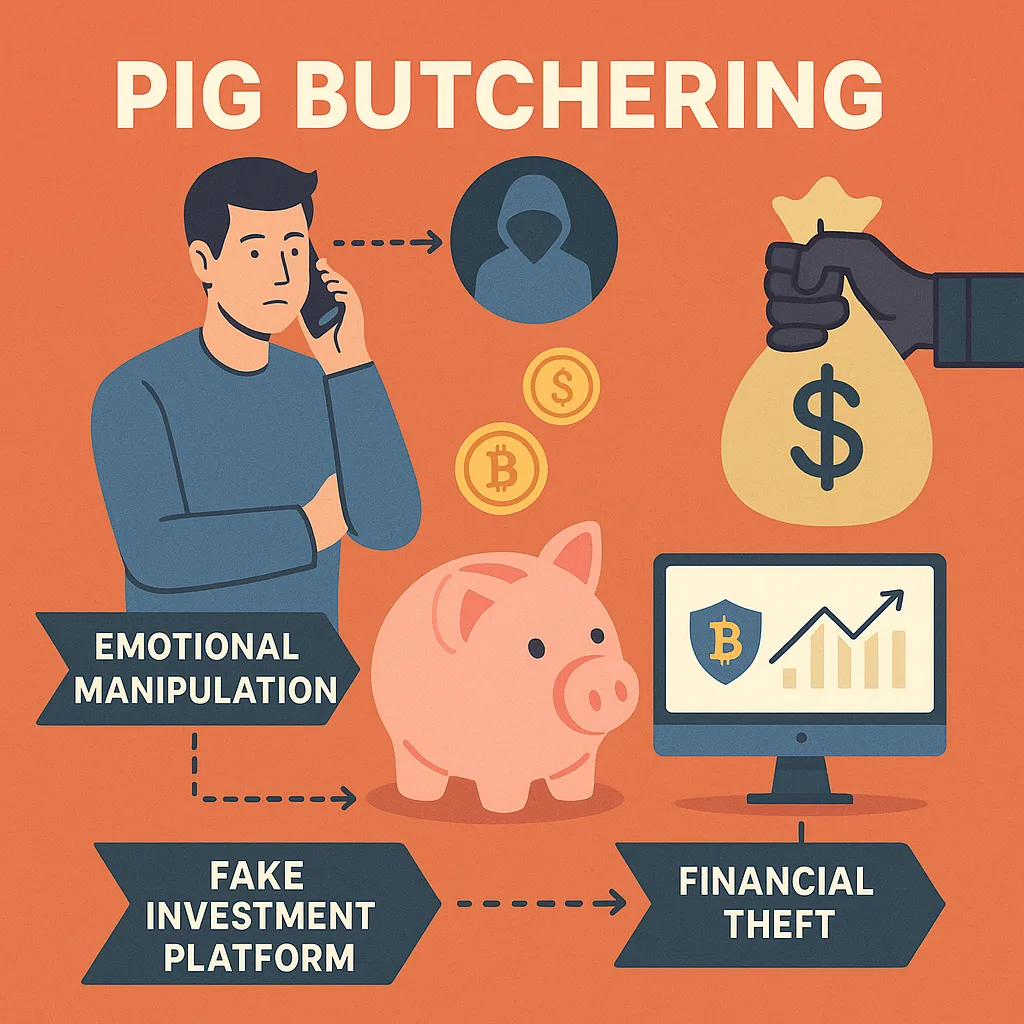The term “Pig Butchering” might sound like rural slang, but in the world of cybersecurity, it refers to one of the most deceptive and psychologically manipulative scams on the rise today.
Pig Butchering is not just a financial scam – it’s a social engineering masterpiece that blends romance, fraud, and crypto crime into a single, devastating con. Understanding how this attack works is essential for IT professionals, cybersecurity teams, and anyone responsible for educating and protecting users from increasingly sophisticated threats.
What Is Pig Butchering?
Pig Butchering is a long-con social engineering scam where the attacker builds trust with the victim over weeks or months, “fattening” them up emotionally and financially – just like feeding a pig before slaughter.
Once trust is established, the scammer introduces a fraudulent investment opportunity, often involving cryptocurrency. The victim is encouraged to invest increasingly large sums of money, seeing fake returns on a spoofed app or website, until one day – the pig is butchered – the scammer disappears, and the funds vanish.
Key Characteristics of the Pig Butchering Scam
1. Emotional Manipulation
Attackers often pose as friendly strangers, romantic partners, or financial mentors. They use:
- Dating apps and social media to establish contact
- Consistent daily interaction to build rapport
- Emotional hooks like “I feel so close to you” or “You’re the only person I trust”
This trust makes victims more likely to follow financial advice blindly.
2. Fake Investment Platforms
Scammers often use:
- Professional-looking apps or websites
- Charts showing fake profits
- Screens that simulate deposits, withdrawals, and returns
The victim may be allowed to withdraw small amounts at first to encourage more deposits.
3. Use of Cryptocurrency
Cryptocurrency is ideal for this scam because:
- It is irreversible
- It is semi-anonymous
- It bypasses traditional banking fraud detection
Victims are often guided step-by-step to open accounts, transfer funds, and use crypto wallets.
4. High Returns and Urgency
Just like traditional Ponzi schemes, the scam offers:
- “Exclusive” investment opportunities
- Unbelievably high returns
- Time-sensitive offers to increase pressure
This taps into FOMO (fear of missing out), particularly among less tech-savvy investors.
Real-World Impact
The Pig Butchering scam has resulted in hundreds of millions in losses globally, with victims ranging from young professionals to retirees. Unlike other cyber threats that focus on malware or technical exploits, this one weaponizes trust and isolation.
What makes this scam so dangerous is the psychological aftermath. Victims not only lose money but suffer severe emotional damage, shame, and often silence due to embarrassment.
How to Identify and Prevent Pig Butchering Scams
For Individuals:
- Question rapid emotional attachment online
- Be suspicious of unsolicited financial advice from new contacts
- Never invest in platforms suggested by strangers without due diligence
- Consult with a trusted financial advisor before transferring funds
For Businesses and Cybersecurity Teams:
- Educate users – especially employees in finance or HR – on social engineering tactics
- Integrate real-life examples of Pig Butchering in cybersecurity awareness training
- Monitor corporate devices and accounts for signs of unusual crypto activity
- Encourage a no-shame reporting culture to catch incidents early
Why It Matters
Cybersecurity is no longer just about protecting devices and networks – it’s about protecting people from digital manipulation. Pig Butchering is a stark reminder that the human element is the softest target, and that scams evolve faster than most defenses.
Security awareness training must evolve too – emphasizing not just phishing and malware, but emotional intelligence, online safety, and real-world scam patterns.
Conclusion
The Pig Butchering cybersecurity scam is a chilling example of how digital criminals exploit not just systems, but human vulnerabilities. As social engineering grows in sophistication, so must our defenses—through awareness, technology, and empathy.


